Last Updated on August 5, 2021
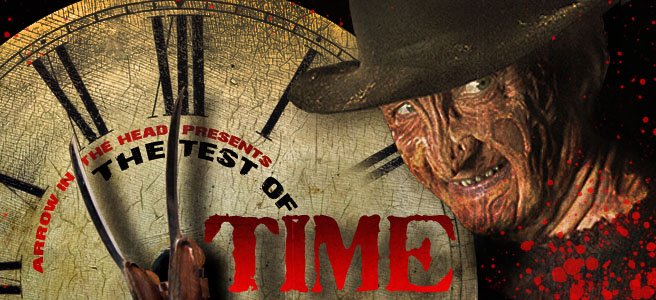
We all have certain movies we love. Movies we respect without question because of either tradition, childhood love, or because they’ve always been classics. However, as time keeps ticking, do those classics still hold up? Do they remain must see? So…the point of this column is to determine how a film holds up for a modern horror audience, to see if it stands the Test of Time.
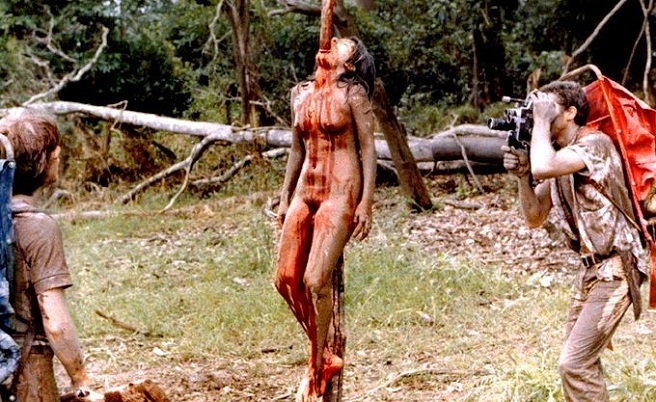
DIRECTOR: RUGGERO DEODATO
STARRING: ROBERT KERMAN, FRANCESCA CIARDI, PERRY PIRKANEN, LUCA BARBARESCHI, CARL GABRIEL YORKE
Cannibalism. What is it about the ingestion of masticated human flesh at the maw of another that is so damn unsettling? Is it simply the intraspecific disharmony of human-on-human crime? The desperate immorality? The visceral response to graphically seeing blood, guts, flesh, bone and viscera chewed and chomped upon? Or at its heart, does cannibalism reveal the worst of our past…a raw, feral, primal instinct born out of the need to do whatever necessary for survival? Perhaps a sick and twisted combo of all of the above…
Whatever the root cause, one thing remains certain. Cannibalism has long been a topic of some of the gnarliest horror films ever essayed. And while we’re not quite sure Ana Lily Amirpour’s new cannibal-comedy THE BAD BATCH will be included in that category (read E.Dub’s review HERE, C.Bum’s HERE), movies like CANNIBAL FEROX, THE HILLS HAVE EYES, RAW MEAT, RAVENOUS, MOTEL HELL, THE GREEN INFERNO, PARENTS, DELICATESSEN, SILENCE OF THE LAMBS, etc. are about as gross and gastronomically gory as they get. Oh wait, are we omitting one very important title among the litany?
F*ck yeah we are! Not only were we saving the best for last, we’re now officially going to see how Ruggero Deodato’s vile, quasi-incriminating cinema-vérité outing CANNIBAL HOLOCAUST has withstood the Test of Time over the past 37 years. Get out the tourniquets and barf-bags boys and girls, it’s fin to get all kinds of messy up in here!
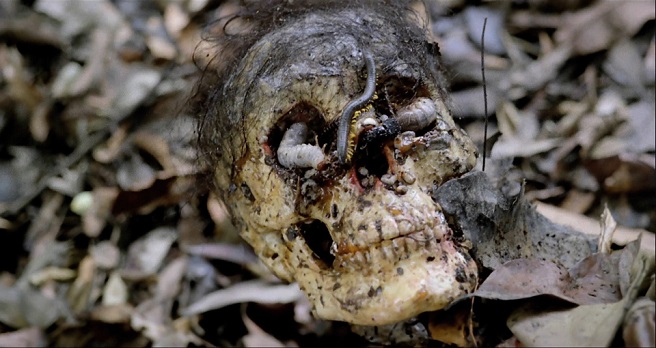
UNDER EXAMINATION: CANNIBAL HOLOCAUST
THE STORY: In one of the very first so called “found-footage” horror films we can recall, Deodato’s stylized cinema verite setup is, was and will always be one of the films crowning achievements. More on that below, but from the get go, the quasi-documentary (shockumentary, if you will) lends the film a raw, unfiltered veracity that makes it hard to dismiss as anything other than what it purports to be…a jarring jungle-made snuff film.
Recall the scenario. A group of NYC-based anthropologists are tasked with setting out to the heart of the Peruvian rainforest in order to locate and rescue missing documentary film crew. Once there, they discover the two warring cannibal tribes – the Yanomamo and Shamatari – ultimately negotiating to procure the left-behind footage the crew was able to capture prior to vanishing. And if the Amazonian jungle, nicknamed The Green Inferno, wasn’t cruel and unforgiving enough, the eventual discovery of the contents of the documentary tapes left behind prove to be tenfold disturbing. All on the menu: amputation, mutilation, flesh-mastication, animal cruelty, bodily impalement and lethal gang-rape!
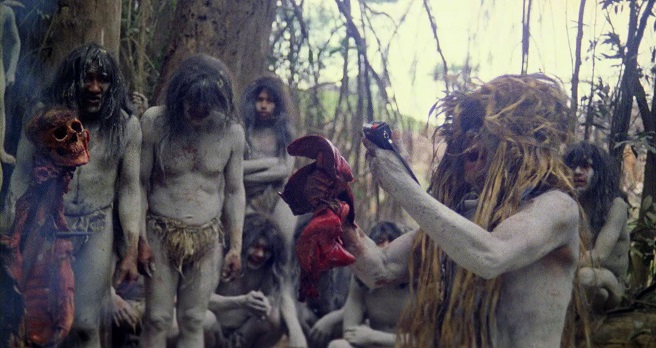
WHAT HOLDS-UP: While the transfer from 16mm to 35mm (negative to print) does show a bit of wear and tear, it’s precisely the concomitant docu-style that still works in CH’s favor. After-all, this movie was so authentic at the time of its release, that director Ruggero Deodato was actually arrested for obscenity and faced potential murder charges and life sentence in prison. Since all four of his principal actors signed a contract agreeing to disappear for a whole year after the film was released, Deodato was forced to locate the actors and prove that they were indeed still alive and well. This only occurred a mere ten days after the film was released. The actors appeared in court and the charges were summarily dropped. Now, if that is not a glowing endorsement on the believable verisimilitude of your film, what is?
Okay, how about the violence. In addition to the unvarnished realism of the documentary framing device, the depiction of violence in CH is just as unflinchingly authentic. There are no glamorously over the top, sensationalistic approaches to the violence, it’s all so tactile and matter of fact. Consider the scene where one of the cannibals ritualistically rapes a girl with a stone phallus in the mud. It’s awkward, messy, deeply disturbing and brutally violent, and done in a way that feels totally un-staged and unscripted. Couple this with the actual real-life stints of barbarous animal cruelty in the film (which does not hold up in the slightest) and it makes the overall experience feel that much harder to dismiss as having really happened.
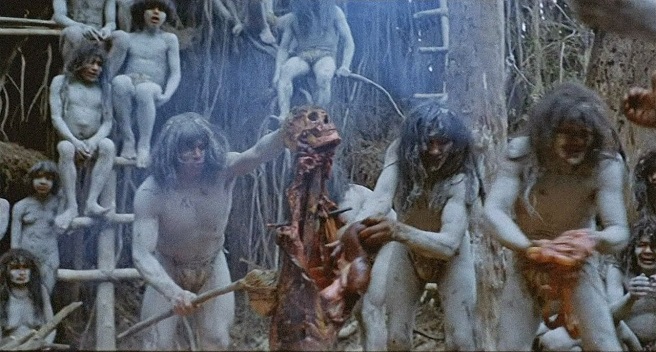
Of course, none of the violence in the film can compare to the daring denouement. You know, the absolutely sensory-assaulting, hypnotically marauding final frames of poor Faye being sexually devoured and gastronomically gouged to death by the savage collective. It’s an unshakable sequence, and to see it is to be forever scarified by its intensity. No joke. The credibility of the film until this point is utterly reinforced by this one f*cked up final scene, as it transcends performance and becomes something else entirely. Really, it’s a dizzying display of uncut carnage that, outside of maybe THE TEXAS CHAINSAW MASSACRE, may never be rivaled onscreen ever again. Not just visually, mind you, but aurally as well!
One of the undying strengths of CANNIBAL HOLOCAUST is its profound use of sound and music. The movie starts off by lulling you into a false sense of security as soon as Riz Ortolani’s gorgeous film score weepily kicks up over the flyover montage of the Amazon. Honestly, this is not only my favorite horror film score of all time, it might be my favorite of any movie. It’s so damn good I often play it in my spare time. The brilliance of Deodato to juxtapose this gorgeous symphony of sound with abject horror of the cannibalistic imagery cannot be overstated. Seriously, the affect this has on a viewer on a subconscious level…hearing beauty while simultaneously seeing ugliness…there’s a jolting sense of cognitive dissonance that renders one totally helpless. By the end of the sequence, one peppered with increasingly rhythmic thuds, you’re left to stew in your own jostled juices of terrified confusion…physically waylaid, emotionally taxed and psychologically battered. The finale is not only the best part of CANNIBAL HOLOCAUST, it’s the most durably disturbing!
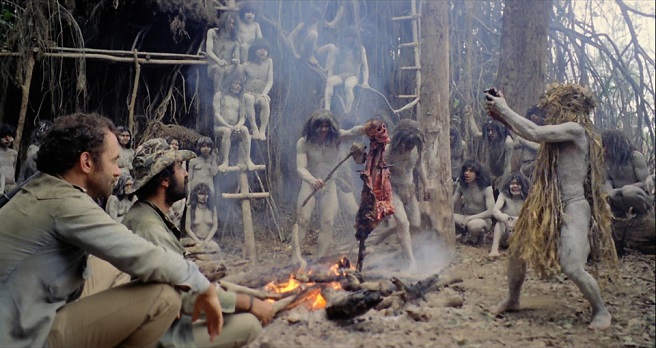
WHAT BLOWS NOW: Quite bluntly, the animal cruelty in this film is unforgivable. Granted, much like the grainy film stock credibly reinforces the documentary aspect of the film, the same argument can be made for the violence toward animals as it relates to humans. That is, the animal cruelty makes the human cruelty feel more authentic. But so what, there’s no acceptable argument to made for that giant turtle being tortured and split apart like that. Or that squealing rat-monkey thing being incised through the gut! No excuse. To wit, this type of behavior may have been acceptable in 1980, but now, in 2017? PETA would have a f*cking field day if a movie like this was released today…and rightly so. This, to me, is the one aspect of CH that blew then, and doubly blows now. It’s needlessly inhumane, and with or without it, does nothing to the impact of the movies fatal finale.
THE VERDICT: Yet, all in all, CANNIBAL HOLOCAUST maintains its reputation up as a starkly craven, controversially brazen piece of quasi-cannibal-snuff. It’s cold and convincing veracity hasn’t lost an iota of its edge over the past four decades or so. Despite the technical senescence and the unforgivably odious animal cruelty (ANIMAL HOLOCAUST?), the intensity of the cannibalistic violence is too extreme to have depreciated in any measurable amount. The forerunning found-footage shockumentary framing device, coupled with the beautiful film score and realistically raw stints of violence indeed make this a worthy controversial classic. Then and now!
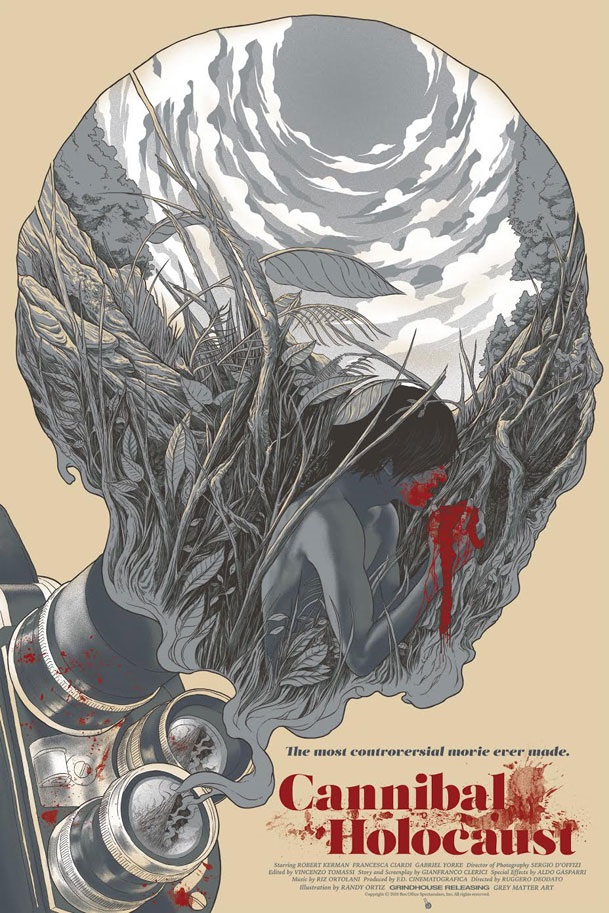


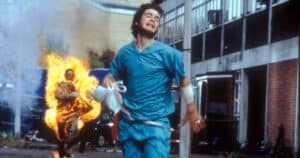



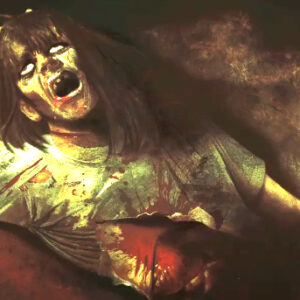

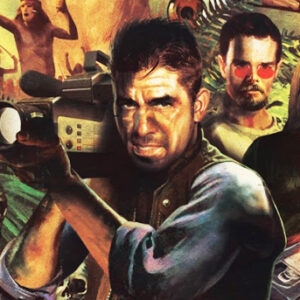

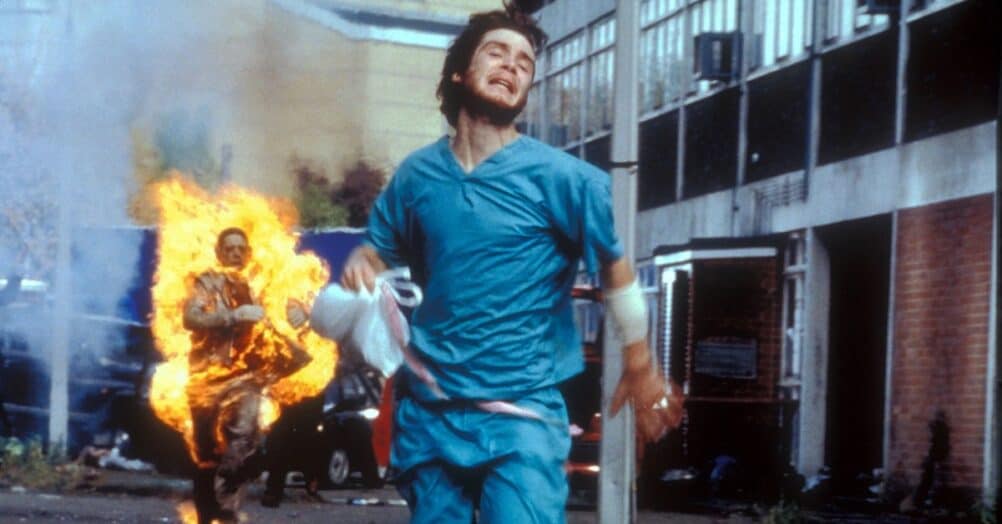





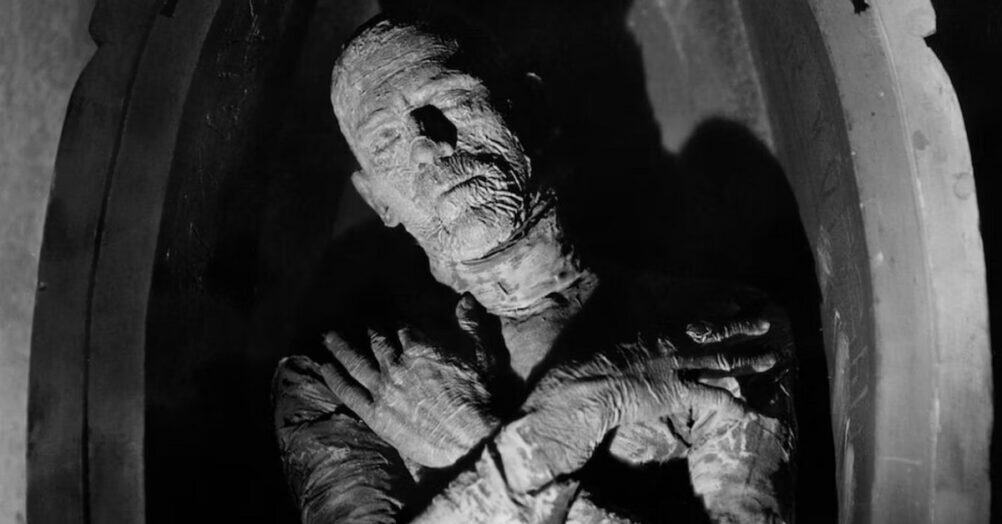
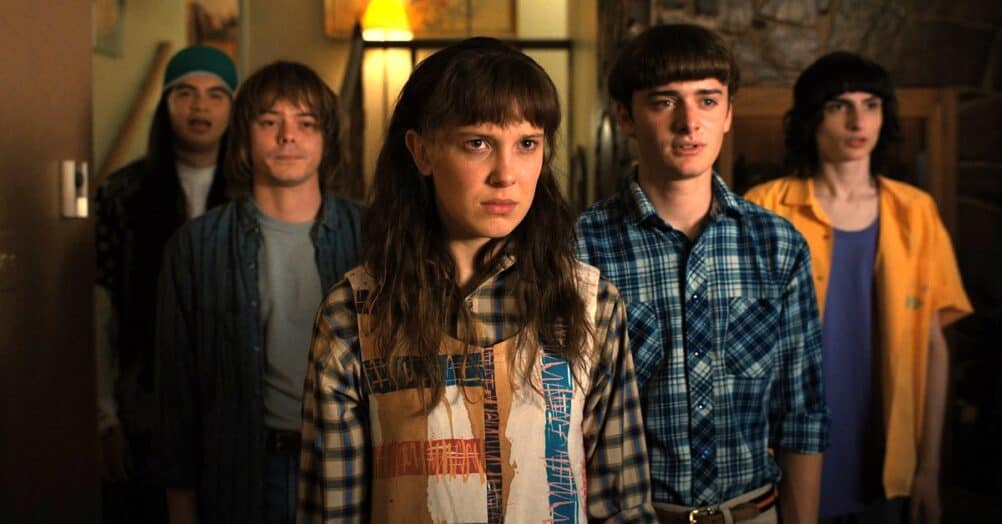


Follow the JOBLO MOVIE NETWORK
Follow us on YOUTUBE
Follow ARROW IN THE HEAD
Follow AITH on YOUTUBE